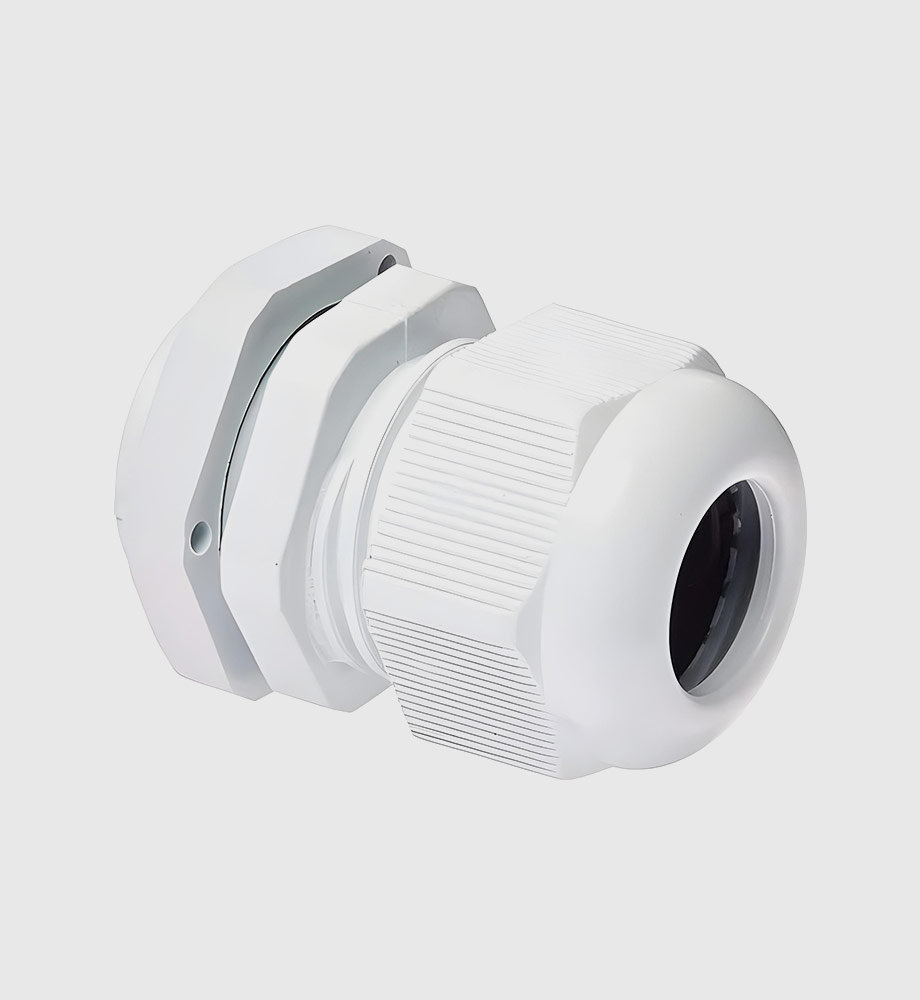Key Features
- Material Options: PVC (plastic) or Nylon (PA66). Nylon glands are inherently more durable and usually UL94 V2/V0 flame rated, while PVC glands can be UL94 V0 (as noted for high-end PVC).
- IP68 Seal Rating: Effective sealing against dust and submersion (per manufacturer ratings).
- Multiple Thread Types: Metric, PG, NPT or BSP threads available to match equipment ports.
- Wide Cable Range: Adjustable grommet size to grip different cable diameters securely (often ±10–20% range).
- Color Coding (PVC): PVC glands often come in red, gray, yellow etc., allowing easy cable identification.
Benefits
- Environmental Protection: Maintain enclosure’s waterproof rating by sealing cable entries; keeps electronics clean.
- Strain Relief: Prevents cable tugging forces from transmitting to internal terminals, enhancing reliability.
- Electrical Insulation: Non-metallic glands eliminate grounding issues and prevent corrosion (no metal interface).
- Easy Assembly: Simple nut tightening gives an automatic seal (“click” sound on proper locking).
Applications
- Industrial Controls: Used on junction boxes, panelboards, and sensor housings in machinery.
- Outdoor Equipment: Solar panel or lighting fixture cable entries that require IP68 protection.
- Data Centers: Sealing power and fiber cables entering wall-mounted enclosures.
- Marine and Automotive: Plastic glands in boats or vehicles where salt spray would corrode metal glands.
Technical Specifications
- Sealing Material: Usually EPDM or NBR rubber inner grommet.
- Flammability: Nylon glands typically UL94 V2 or better; PVC glands often V0.
- Temperature Range: Nylon: –20°C to +100°C; PVC: –10°C to +60°C (approx).
- Certifications: Many are UL, CE, RoHS certified; IP and NEMA ratings as specified by maker.
Unique Selling Points (USPs)
- High-Grade Standards: For example, some PVC glands are made of PA66 and UL94 V0 for maximum safety.
- Corrosion Resistance: Unlike brass glands, plastic glands won’t corrode in harsh chemicals or humidity.
- Wide Variety: Available from miniature sizes for telecommunications to large armored cable glands for machinery.

